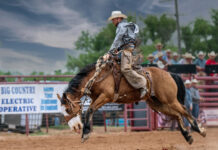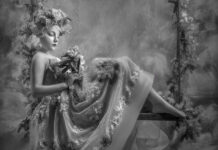Why AI Belongs in Your Artistic Workflow
by Terri Butler
As a creative, we’ve all experienced those times when our muse “goes on vacation” and leaves us with the dreaded “creative block.” It’s that sinking feeling when confidence wanes, creativity stalls, and you find yourself staring at a blank canvas or document.
Fortunately, we now have AI to give us a jump start. Artificial Intelligence is reshaping the creative landscape, offering photographers, digital artists, and storytellers a new playground for visual ideation. Tools like Midjourney, Dall-E, and Firefly can render in minutes what once took hours to conceptualize and sketch on paper.
In this article, I’m going to demonstrate how to use a couple of the popular AI tools to spark your creativity and get the ideas flowing. We will gather some prompts and render some ideas for artistic composites. I will provide examples of the prompt developed and show a few of the rendered inspirational images that sparked the innovative energy for the final artwork.
Let’s start with three artworks that were intended for my AWAKE/KAIZEN art group. The AWAKE and KAIZEN art groups are both known for powerful, imaginative storytelling through digital art, often blending photography with painterly or surrealist techniques. AWAKE artists often explore transformational storytelling, emphasizing emotional depth, symbolism, and personal growth. Their work is typically rich in texture, layers, and fantasy realism. KAIZEN tends to focus more on creative growth, bold experimentation, and using storytelling as a tool for artistic mastery. While still emotional and symbolic, KAIZEN artwork often incorporates conceptual, philosophical, or high-impact surrealism.

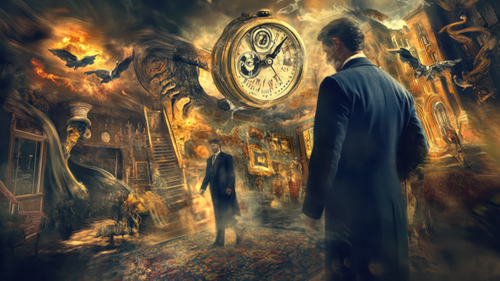
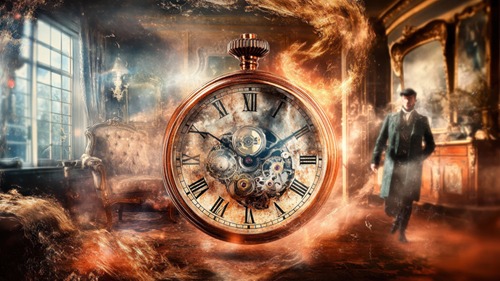
I had previously trained ChatGPT to understand the style of art generally posted to these Facebook groups, so I won’t have to give it detailed instructions on what AWAKE or KAIZEN art means.
Art Inspiration for Collage Composites – Let’s start with some storytelling for scenes set in the Victorian period in Toronto, Canada, inspired by the Murdock Mysteries TV series. Here is what I asked ChatGPT to build for me:
I would like to build some storytelling scenes appropriate for the AWAKE art group with the theme of the Victorian period in Toronto, the 1890, similar to the early filming of the Murdock Mysteries TV series. They need to be simple enough for me to recreate in the digital art style of the AWAKE group but I will render them in an AI engine like Midjourney for inspiration. Following the AWAKE style they should describe artwork that is layered, textured, with elements, use symbolism or imagination and can be somewhat surreal. The overall theme of the story is Victorian Toronto, the Murdock Mysteries theme. Please build 10 prompts.
I then used the prompts that ChatGPT returned and rendered imaged in Midjourney. At the top of the page are several examples of the AI images and the artwork that I ultimately created. My artwork is a Photoshop composite of elements, both stock and AI elements, but the scene was NOT created in AI.
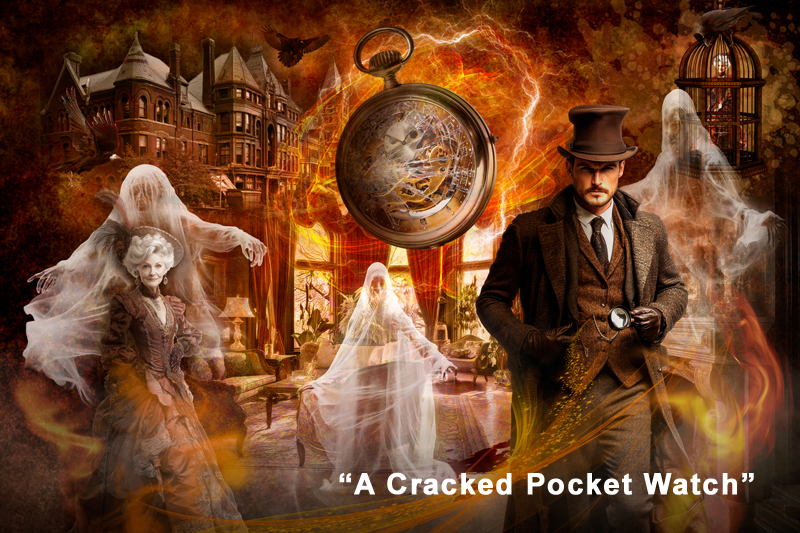
“A Cracked Pocket Watch” – Here is one of the 10 prompts for the image above: The Timepiece Murder – A cracked pocket watch, stopped at the moment of death, floats above an elegant parlor crime scene. Fragments of time and memory swirl around, forming ghostly figures of suspects and victims.
I then rendered this prompt in Midjourney and gathered several inspirational images. Above are three samples of the 8 or 10 images I gathered from Midjourney.
On the title page (left) is the final artwork for “A Cracked Pocket Watch” built with stock images, brushes, and AI-generated models and elements.

“The Hidden Laboratory” – Here is the second of the ten prompts:
The Alchemist’s Lair – A hidden laboratory beneath a Toronto bookshop glows with eerie light. Strange vials bubble with impossible colors, and a detective peers through a magnifying glass as symbols from an unknown science float in the air.
Below are three samples of the 8 or 10 images I gathered from Midjourney for the final artwork built with stock images, brushes and AI-generated models and elements.

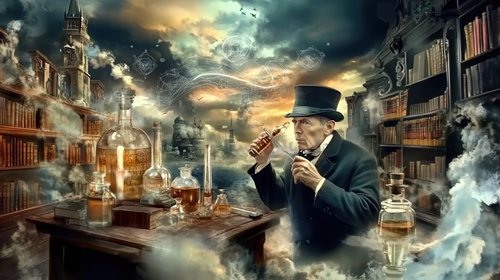


The Lantern Keeper – Here is the third of the 10 prompts: Along the icy edge of the Toronto waterfront, a hooded figure lights rusted lanterns that no longer have wicks. The flames burn green and flicker with memories—glimpses of shipwrecks, lost lovers, and whispered farewells. Locals say if you follow the lanterns in sequence, you disappear. A child’s boot sits alone on the dock, untouched by snow. Behind the figure, a gull flies backward, suspended in a loop of sky.



Above are three samples of the 8 or 10 images I gathered from Midjourney and the final artwork for “The Hidden Laboratory” built with stock images, brushes and an AI generated models and elements. Below is a breakdown of all the elements used in this artwork. As you can see from these examples, the AI is used for ideas and inspiration. The AI is not used to create the final artwork, even if some of the elements may have been created using AI.
In the Lantern Keeper, the figure and the two dock scenes are all AI-generated. One of the boats is a CG model and the rest of elements are stock images.
AI Inspiration for Storytelling Composites – The second way that I use the AI tools for ideas and inspiration is for storytelling ideas for composites that may be more traditional compositing. The next few examples demonstrate how I might ask ChatGPT to build me some prompts for images with impact that I can then create in Photoshop as artistic composites. With these composites, the entire image was create using only stock images, stock textures and brushes.
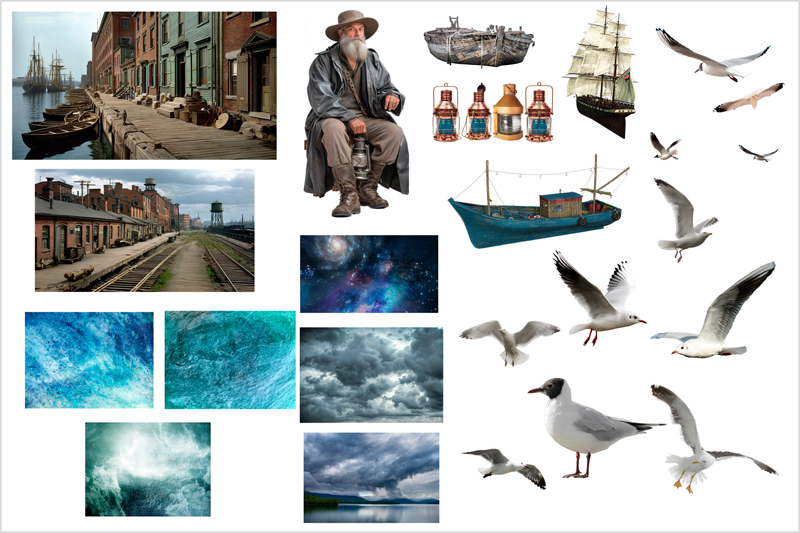
I asked ChatGPT: Can you describe 30 symbolic storytelling artworks that would work well in this group (Kaizen). I would like a primary model or character figure as the focus of the piece. Here are two examples of the returned prompts and my use of those prompts.


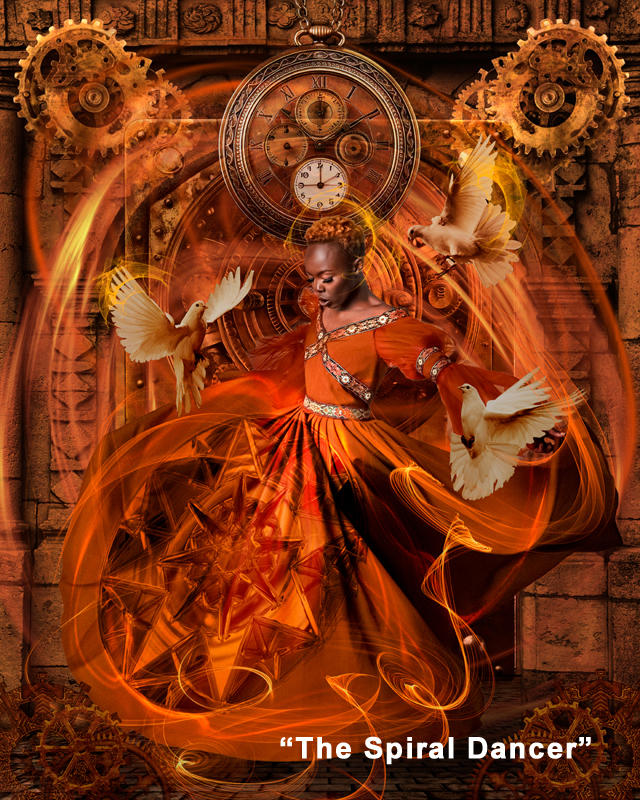
“The Spiral Dancer” – A dancer spiraling within an energy vortex, symbolizing the cycles of life and personal evolution.

Time Portal – A hooded figure steps through an ornate mirror set in a barren desert, transitioning between two realities. Surrounding the mirror are scattered relics – a rusted lantern, a cracked compass, and a tattered map that glows faintly with runic symbols. The desert sands form spiraling patterns at the figure’s feet while faint mirages of ancient cities rise in the background. Overhead, glowing ribbons of light twist like auroras, hinting at the energy binding the two worlds.


So, we have reviewed some cases for using AI for ideation and inspiration where AI creates the ideas or the stories and may or may not also create some of the elements. The important thing to note is that the artist in these use cases must actually build the artwork from scratch. Each element must be selected from a background, color matched, lighted to match the scene and composted into the story. The AI tool does none of that work; the artist creates the composition, not the AI tools.
As AI infiltrates more and more of our photography and artistic workflow, it will be important for each of us to both embrace the tools and learn how to leverage them creatively. Some may “dig in their heels” and refuse to use AI in any way. Other will blur the line between what is the artist or photographer’s contribution and allow the tool to do it all. Neither extreme is probably the right answer. Each will need to find a comfort zone for their own workflow when beginning their personal journey with these AI tools.What is certain, AI is here to stay.
 For more than 12 years, Terri has been using and teaching Photoshop and digital painting techniques. After a 22-year career in the U.S. Navy and 18 years as an independent IT consultant, she returned to photography, capturing wildlife and nature images to use in paintings and digital composites. At Texas School 2025, Terri taught a class on “Advanced Photoshop Compositing Techniques.” Learn more about her at pixelmixerart.com.
For more than 12 years, Terri has been using and teaching Photoshop and digital painting techniques. After a 22-year career in the U.S. Navy and 18 years as an independent IT consultant, she returned to photography, capturing wildlife and nature images to use in paintings and digital composites. At Texas School 2025, Terri taught a class on “Advanced Photoshop Compositing Techniques.” Learn more about her at pixelmixerart.com.




